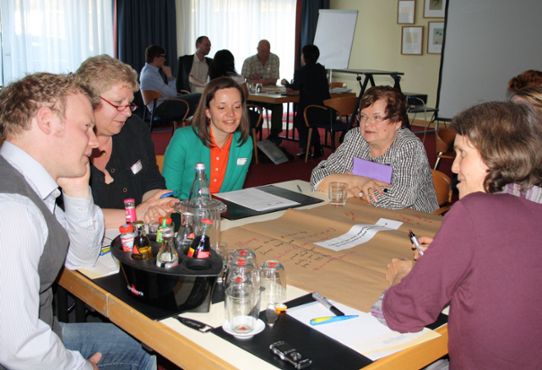A warmer climate with more precipitation and a rise in sea level will affect the ecosystem and increase risks linked with natural disasters. Strategies are needed now, to help decision makers and other groups so that changes can be met in the best possible way.
The adaptation work around the Baltic Sea is being carried out in a flagship project under the EU Strategy for the Baltic Sea Region. The Baltadapt project aims to produce an adaptation strategy for the region, focusing on the sea and coastal areas. An important part of the strategy is the collaboration between the Russian Federation and the EU countries around the Baltic Sea.
- Decisions that are taken within different areas must consider the effects of climate change. However the knowledge and understanding of possibilities and problems differ significantly between different countries, says Lotta Andersson, researcher at SMHI.
Better communication
An important milestone was reached recently during a policy meeting in Berlin, when representatives from the countries’ ministries, the EU and researchers gave the go-ahead to continue the work.
- Some important principles were established, such as the work being carried out using existing networks, and linking climate change adaptation to other issues. Countries that have come further with their plans will support those that have not come so far, says Lotta Andersson.
The strategy is planned to be completed in 18 months’ time. Until then a broad dialogue will take place with decision-makers and representatives from different sectors.
For Sweden, the Baltic Sea work has led to an increase in opportunities for cooperation and better communication between researchers and decision-makers. This could result in common databases that can be used for climate change adaptation, as well as new information systems.
- We have a better exchange between countries and can take advantage of practical solutions at both national and local level.

Workshops on tourism and agriculture
In connection with the policy meeting a workshop was also held recently in Warnemünde, with representatives from the tourist industry from countries around the Baltic, examining the impact of climate change on tourism. A corresponding workshop focusing on agriculture will be held in Norrköping at the end of May.
A warmer climate could lead to increased tourism for the region, but conditions along the coast could become worse, for example due to increased algal blooming. Farmers can probably expect a longer growing season, with new types of crop, but could be affected more by diseases and pests.
The Baltadapt project is run by eleven partners and led by the Danish Meteorological Institute. SMHI, together with the Centre for Climate Science and Policy Research, is responsible for producing the strategy, including dialogues with the different sectors. The work is partly carried out within the framework of the National Centre for Climate Adaptation. SMHI is also responsible for producing climate information for the region.